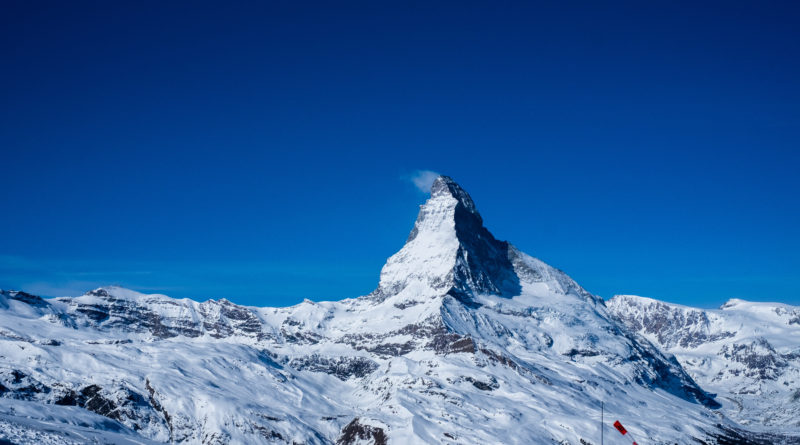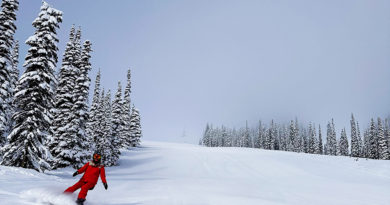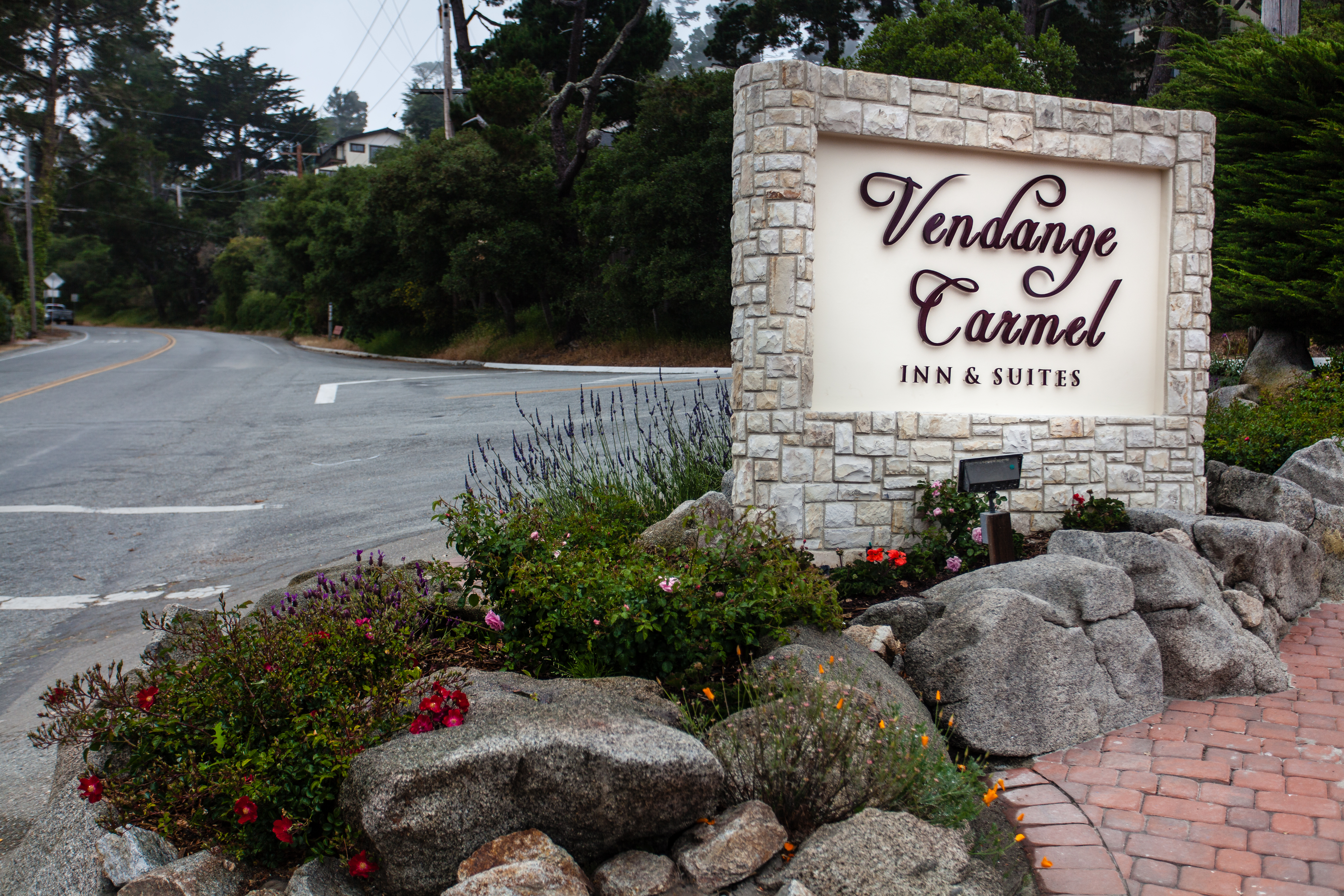Papers Please! Learn German, travel often to Switzerland and with a little luck you’ll get a Swiss Passport!
It was a check-the-box trip, one intended to fill our quota to earn my husband possible Swiss citizenship. With dual nationality, I’m fortunate enough to hold the coveted red passport due to my family bloodline.
Having spent my mid-twenties in the Alps, I tucked the notion in my mind, that perhaps one day, my husband could also carry one of the world’s most powerful passports.
Easier said than done. After 12 years of marriage, we started with the initial paperwork, followed by an essay (in German) as to why he wanted to become a Swiss citizen. During the process, we delivered a library’s worth of documents, ranging from financial reports to letters of recommendation. Next were in-person interviews at the nearest Swiss consulate, which happened to be in San Francisco. Thus, we flew from our home in San Diego for verbal tests—again, in German. After hours of studying, plus spending thousands in application fees, there was no turning back.
The good news was we passed almost every phase; the bad news was that we hadn’t visited Switzerland enough to prove our allegiance. The fact that the pandemic had closed travel didn’t matter. We still had to make three trips over five years. This meant we were one trip short of hopefully waving the white-cross flag.
And so, we packed our bags, adopting the mindset that this trip would double as a spring-skiing getaway during our qualifying trial. Seven days would introduce us to the French municipality of Crans-Montana in Valais, and reconnect us with our familiar friend, Zermatt in the German-speaking district of Visp.
SWISS airlines landed us in Zurich, where we caught a train to our first destination at Crans-Montana. The Swiss Travel System (STS) left little need to rent a car since a Swiss Travel Pass granted us unlimited travel by train, bus, and boat.
I had once lived just two hours away in the village of Gstaad, yet there wasn’t too much I knew about Crans-Montana. Now some 20 years later, I returned as the prodigal child, clinging to my roots so I could build new ones.
Although my family tree had branched from Swiss heritage, there still was something purely impartial about the culture. Locals had a deep love for nature, family, and order. There was rarely conflict because frankly, there was nothing to argue about.
Switzerland was a harmonious nation, clichéd for chocolate, cowbells, and cheese. Those lures aside, there was a respect for the land and one’s neighbor. We felt it in Crans-Montana, where four municipalities joined forces to unveil a twin-town nirvana in 2017. As recent as it was, the verdant magic started back in 1893 with two besties, Louis Antille and Michel Zufferey.
Together, they climbed from the valley to the mountaintop to open the area’s first hotel, Hôtel du Parc. The region soon gained notoriety from doctors who prescribed patients the area’s air quality, and later from the world’s best golfers during the 1983 European Masters.
While it was the sunshine and sky that lured these pioneers, it was the 1987 World Ski Championships that officially put the destination on the map. And now, we were on that map, tracking it with apps wide open for everything it had to offer . . . starting with Hostellerie du Pas de l’Ours.
This Relais & Châteaux property had me at sheepskin rugs. I’m a sucker for refined coziness, and this boutique hotel nailed it with in-room fireplaces, heated floors, private Jacuzzis, stone walls, and timber-beamed ceilings. Sinking my jetlagged feet into plush slippers, I exhaled and asked my husband the inevitable question.
“I wonder what property costs here?”
We often do that; escape to a land void of troubles, tasks, and to-dos, and wonder if it’s “the place.” Without answering, my husband pulled back the curtains to unveil the moon-lit peaks.
He nodded. “I think our dogs would love it here.”
What was not to love?
Within walking distance of our chalet, the ski resort boasted 87 miles of trails, a 10,000 ft summit, and $50 lift tickets. From the top, a chain of peaks pierced through a duvet of clouds, revealing the Valais Alps from the Matterhorn to Mont Blanc.
To get a lay of the land, we hired a ski guide who took us on wide, carving pistes, down untouched bowls, and along 7-mile runs that made our thighs burn. In rudimentary French, I asked him why there were no people on the mountain. He explained that lift lines and swarmed slopes were basically nonexistent, especially come spring when locals traded skis for hiking boots and snowboards for bikes.
With nearly the whole mountain to ourselves, we pushed pause for lunch at La Cabane des Violettes. This stone mountain hut takes gourmet cuisine to the next level, literally. At 7,000 feet, the restaurant serves traditional temptations like croûte au fromage (bubbling cheese toast) and rösti (grated potato cake) with sausage and white asparagus.
Between breakfast croissants and a hearty lunch, you’d think we’d have had our fill of food for the day, but low and behold, we were in wine country. For an introduction to the blends of Valais, we went straight to the source, Cave le Tambourin Winery.
Run by second generation wine makers, Ishmaël and Madeleine Bonvin, the winery popped the cork in 1987. Today it’s producing over 30,000 bottles of 20 award-winning wines. From the cellar, Madeleine dusted off six bottles, pairing them with platters of local cheeses, cured meats, and artisan chocolate to boot.
She credited the Rhône Valley’s Mediterranean climate for part of their success, in this sun-drenched region of 300 wineries producing robust reds, aromatic whites, and fruity rosés.
Believe it or not, we had fondu that night, but the fact we had to work for it justified the glutenous consumption. At full moon, hiking from the neighboring village of Aminona to Colombire Hamlet is a must. It was our guide, Marlène Galletti who greeted us with snowshoes, hiking poles, headlamps, and a Blue Healer ready to rumble.
A former thriving ski town, Aminona seemed frozen in time, a ghostly relic of its thriving past dating back to 1968. Development plans have waivered, and it currently serves as a gateway for hiking, cross country skiing, and mountain biking.
From the muddy trailhead, we learned of Marlène’s background as a cheese maker and herbologist. She had traveled the world, sharing homesteading secrets with communities seeking to live off the land. Naturally, I asked her about everything from homemade sunscreen to longevity tinctures, that is, until she pointed toward the horizon.
That single moment silenced us all. A full moon overshadowed the mountains, so pink you’d swear they were blushing. We continued to climb, the quiet only broken by the sound of the snow crunching beneath our crampons.
And then, there it was, Colombire le Hameau—a “Hamlet” of clustered mayens. These traditional stone-and-wooden chalets function as summer homes for farmers who reside upstairs and keep livestock below.
With keys to the kingdom, Marlène opened the door to a mayen and put us to work. Together, the three of us cooked cheese fondue with boiled potatoes, pearl onions, and cornichons. After a meal like that, we wished we had selected the “return sledding” option. Instead, we hiked under the moonlight, stopping only once to admire a yellow coltsfoot flower pushing through the snow in determination.
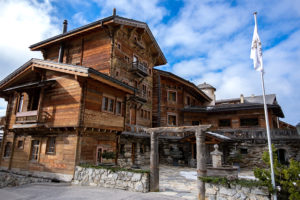
Puncturing the surrounding crust with her pole, Marlène scraped away a layer of snow as if giving the flower space to breath. There was something remarkable about that moment, a hint of spring beckoning the sprouting seeds to burst forth in a mighty super bloom.
The next two days we hit the slopes, catching first chair and maximizing our time as if someone might shake us from our dream. Population in Crans-Montana supposedly triples from 15,000 come ski season. We didn’t notice. Instead, we picked our lines, marveling that we were making tracks in April.
As much as I’d like to talk about the shopping, it was only while walking along Rue du Prado that I noticed boutiques selling luxury brands like Hermès, Montblanc, and Chopard. There are nearly 200 shops rounding out the local attractions of 200+ miles of hiking/biking trails, 7 lakes, 4 golf courses, 3 museums, 130 restaurants, 12 historical villages, and 4 waterfalls. But who’s counting numbers—or calories— when you can eat at mountain huts and Michelin-starred restaurants?
Alas, we indulged again, this time at Le Bistrot des Ours in the “cellar” of our hotel. With a mountain-inspired menu courtesy of Franck Reynaud, the Michelin-starred chef uses only Swiss ingredients in his French-Mediterranean cuisine.
If time allowed, we would have dined there again . . . with a smattering of paragliding, dog sledding, chocolate tasting, yak hiking, and maybe even heliskiing. Needless to say, we weren’t ready to leave Crans-Montana, but Zermatt (and budget) had us locked in for Part 2 of the trip.
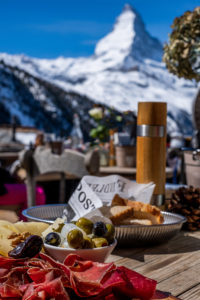
From our hotel, we caught a morning bus to Sion, followed by a train to Visp. Peppering a patchwork of fields and vineyards were darling chalets, as perfect as if God had sprinkled Cuckoo clocks from heaven.
Going from French to German required some brain activation. Suddenly with that first greeting of “Grüezi,” I felt like I was home. It was my fourth trip to Zermatt, but still, the fact that village travel was by foot, bike, or electric taxi was remarkable. Until the 1980s, the vehicle-free village of Zermatt relied on horse-drawn carriages. Despite these changes, the sound of clopping on cobblestone could still be heard echoing through the narrow streets of “Hinterdorf.”
Dating back to the 16th century, this historic zone has barns and stables constructed from larch trees in the traditional style, balancing on stilts with slate roofs, rickety stepladders, and timber-cornered notching. At its center is a memorial fountain paying tribute to Ulrich Inderbinen who climbed the Matterhorn 370 times.
We too would be approaching that mountain, or rather, its base via the comfort of a chairlift. Getting there was easy, with direct access to the slopes from Hotel CERVO. What Pas de l’Ours was to elegance, CERVO was to design.
Remodeled in 2020, the stylish property has just 54 rooms housed within seven chalets. With tweed, wool, and leather textiles, our room teased hipster-huntsman-meets-polished-mountaineer. Private ski lockers, an “honesty bar,” live DJ, and a climbing wall checked all the boxes.
Beauty was in the details, with medicine bottles filled with dried flowers below deer mounts reminding us where we were. Oh, and the ice bath helped solidify that fact—a chilly awakening after the sauna, steam bath, and relaxation yurt. This mountain ashram was the main draw for my husband, while its proximity to the slopes had me on speed dial.
From our hotel, an elevator took us through the mountain to the starting point of Europe’s highest ski resort. Rails, escalators, gondolas, and chairlifts revealed a mind-blowing feat of engineering and infrastructure that covered 324 miles across two countries. As we skied our way toward Italy, I asked my husband if we needed our passports.
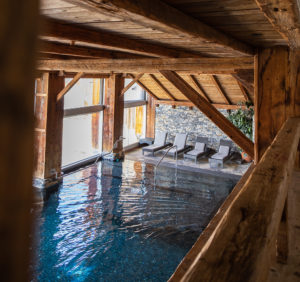
With that question, it became obvious I had fallen madly in love with Switzerland. Our romance blossomed that afternoon as we zipped through Alpine villages toward Chez Vrony—a restaurant we now consider among our “Top Five.”
With a front row seat to the Matterhorn, Chez Vrony came from humble beginnings as a family farmhouse. Over the past century, traditional recipes have been passed down for generations. Each dish is prepared with organic products including the dried meats, house sausage, and Alpine cheese. Withstanding the test of time, the family eventually turned their farmhouse into one of the area’s best restaurants, one so beautiful I almost cried.
For me, these were life-giving moments, where I would smile at no one in particular, but rather at the fact Switzerland had my heart. Actually, it had the heart of many with its 110 hotels, 365 days of snow, 100 restaurants, 50 bars, and unlimited winter and summer activities. It had me with 300+ days of sunshine, a constant wink from the Matterhorn, and ski-in-ski-out everything.
Unclicking our bindings, we sauna-fied our bodies and ate local with back-to-back dinners at CERVO. With five dining options, our hotel hooked us with the Middle Eastern menu at Bazaar, and later with homemade pasta at Madre Nostre.
Walking back to our room, I turned toward my husband and asked if he noticed we had spoken four languages with the staff in two hours. He hadn’t, because that’s just the way things are in Switzerland—in a country that leaves me longing to be more. Where pyramid-shaped mountains are so magnificent, I feel I can reach out and touch them.
Where loving my neighbor holds true meaning, because I know they would toil with me when the soil is dry; Where I can take pride in my name because it has Swiss significance; Where an army of citizens could rise up, but instead choose peace; Where eating is an experience and nature is a habit; Where the air literally has the power to heal.
This was my country—a place where I can bloom, regardless of the cold and bareness; Where clouds live in the valley and sunshine rises on the mountaintop; Where traditions are held close, and family is held closer.
Looking back on my husband’s two-year citizenship process, one might ask if the journey was really worth the destination? Considering I’m now officially married to a Swiss man, I’d say so.

